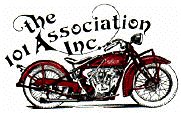I bring up ring sealing as that is often the reason for so much trouble, many times more than the ring gap.
Ring sealing is dependent on cylinder bore finish in conjunction with what material and coating the piston rings are made of. In order to make an educated choice you need to positively know what hardness in the cylinder material you got and consult the ring manufacturer directly about the bore hone finish and ring material and gap they recommend. BUT what is essential basic truth for ring sealing is straight round perpendicular bores.
I could stop here...
But as I am chatty...
My opinion is that hand honing should be out of the question except at a shade tree temporary repair, basicly that will result in inconsistent and uncontrollable hone finish. A surface too fine and the rings can't settle, too coarse and wear is an issue, too shallow crosshatch angle and the oil consumption is rich, too steep crosshatch and the lubrication will suffer.
Plateau finish is, like Tim is mentioning, err on the side of caution if you don't have access to tools to measure the surface. In a blink, you can make the grooves too shallow for the rings to set easily. One source says plateau finished depth of the valleys should be in the order of Rz 100-125 microinches (2.5-3.2 micrometers), while the bearing surface will be Rz 25-40 Microinches (0.6-1.0 micrometers)...but it doesn't mention the important cylinder hardness or ring surface material.
Honing with torque plates is not essential with the later Sport Scout cylinders from the results that I have seen, the distortion wasn't measurable in those cases, but the top and base surfaces where just skimmed and threads where fine. The 101 cylinders that has the headbolts closer to the bore would probably be helped with torque plates, but I don't know.
A bore honing example of a car cylinder bore in an article with torque plate showed a visible pattern after very light honing. The bolt tension made local distortion at the bolt holes and the bore showed a star pattern.
Hot honing can be helping a little with reducing bore distortion, (then in combination with torque plates) as the cylinder do distort when heated as the bore has unequal amount of material around the perifery, but it will not replicate the off center heat a flathead will endure when run.
Cleaning afterwards is so important for ring longetivity. It's better be done vigorously with a hard bristle nylon scrubbing brush and soap and hot water..
I agree with Tim on 0.015-17" (0,40-0,43mm) ring end gap. That's safe. 0.014-15 (0,37-0,40) for the second and oil ring should be viable. Oil consumption is not the main issue in our engines. Top ring baseline endgap is 0.003/in. bore for a modern water cooled car engine, and our air cooled flathead should be at minimum with 0.004 inch for every inch of bore diameter in a new honed cylinder with new rings. 2,87 x 0.004 is about 0.012". The gap will widen a tiny bit when the rings and cylinders are run-in. But If in doubt, this is one instance where more is better than less -a ring endgap that butts from thermal expansion is really bad.
I have to edit a bit since Hastings recommend a minimum of 0.0035" per inch bore for a normal car engine. A normal automobile engine today run some 3,5-4" bore that'll give a ring gap of minimum 0.012-0.014" ring gap depending on bore size. Tim's recommendation of 0.015-17" in our engines is good.


